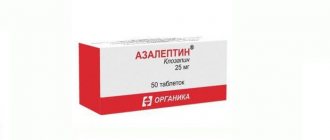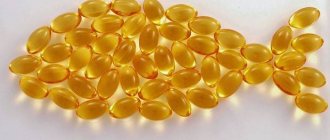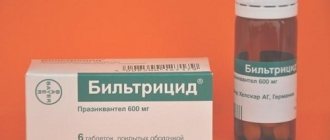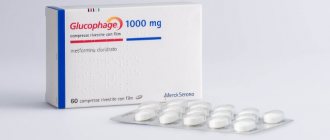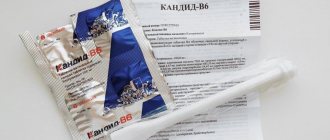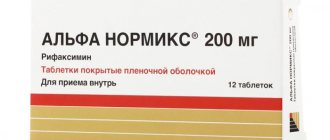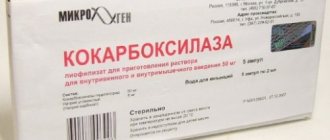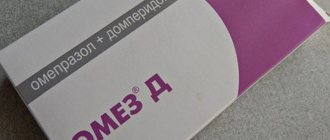Compound
The composition of the drug Sermion differs slightly depending on the amount of active substance in the composition and on the form of release of the drug.
- Active substance: 5 mg nicergoline. Excipients: 100 mg calcium hydrogen phosphate dihydrate, 1.3 mg sodium carboxymethylcellulose, 1.3 mg magnesium stearate , 22.4 mg MCC. Sugar coating of tablets: 10.9 mg talc, 33.35 mg sucrose , 1 mg sandarac resin, 0.7 mg magnesium carbonate , 0.06 mg carnauba wax, 0.6 mg rosin, 2.7 mg acacia resin, 0.7 mg titanium dioxide (E171), 0.05 mg Sunset yellow (E110).
- Active substance: 10 mg nicergoline. Excipients: 94.3 mg calcium hydrogen phosphate dihydrate , 1.3 mg sodium carboxymethylcellulose, 2 mg magnesium stearate, 22.4 mg MCC. Sugar coating of tablets: 10.9 mg of talc, 33.35 mg of sucrose, 1 mg of sandarac resin, 0.7 mg of magnesium carbonate, 0.06 mg of carnauba wax, 0.6 mg of rosin, 2.7 mg of acacia resin, 0.7 mg of titanium dioxide (E171) .
- Active substance: 30 mg of nicergoline. Excipients: 72.69 mg calcium hydrogen phosphate dihydrate, 1.3 mg sodium carboxymethylcellulose, 3.61 mg magnesium stearate, 22.4 mg MCC. Film coating of tablets: 0.7246 mg titanium dioxide (E171), 0.0145 mg silicone, 0.2899 mg polyethylene glycols 600 , 2.8985 mg hypromellose , 0.0725 mg yellow iron oxide (E172).
- Lyophilisate in the form of powder or white porous mass for the preparation of injection solutions. A solvent is also included - a colorless transparent liquid. Active substance: 4 ml nicergoline. Excipients: tartaric acid and lactose monohydrate . Solvent composition: benzalkonium chloride , sodium chloride , water for injection (up to 4 ml).
Sermion tablet p/o 30 mg in blister pack. in pack No. 15x2
Name
Sermion tablet p/o 30 mg in blister pack. in pack No. 15x2
Main active ingredient
Nicergoline
Release form
pills
Compound
Active substance: nicergoline. One film-coated tablet contains 5, 10 or 30 mg of nicergoline. Other excipients: Tablet core: calcium hydrogen phosphate dihydrate (E341), microcrystalline cellulose (E460), magnesium stearate (E470), sodium carboxymethylcellulose (E466). Tablet shell (for 5 mg and 10 mg tablets): sucrose, talc (E553), acacia gum (E414), sandarac gum, magnesium carbonate (E504), titanium dioxide (E171), rosin, carnauba wax (E903), sunset yellow (E110, for 5 mg tablets); Tablet shell (for 30 mg tablets): hydroxypropyl methylcellulose (E464), titanium dioxide (E171), polyethylene glycol 6000 (E1521), yellow iron oxide (E172), silicone.
Description
Sermion, 5 mg - round, convex, film-coated tablets, orange in color. Sermion, 10 mg - round, convex, film-coated tablets, white. Sermion, 30 mg - round, biconvex, film-coated tablets, yellow. Film-coated tablets 5 mg; 15 tablets in a blister (PVC/PVDC - aluminum foil), 2 blisters and instructions for use in a cardboard box. Film-coated tablets 10 mg; 25 tablets in a blister (PVC/PVDC - aluminum foil), 2 blisters and instructions for use in a cardboard box. Film-coated tablets 30 mg; 15 tablets in a blister (PVC/PVDC - aluminum foil), 2 blisters and instructions for use in a cardboard box.
Dosage
5 mg; 10 mg; 30 mg;
Indications for use
The active substance contained in Sermion is a semi-synthetic derivative of ergot alkaloid, which has a beneficial effect on impaired brain metabolism in older people. The active substance (nicergoline) connects with certain binding sites of various messenger substances produced in the human body and influencing the transmission of impulses between nerve cells. An imbalance in the content of these messenger substances leads to the development of disorders. In this way, Sermion promotes recovery processes in the brain during deficient conditions. Sermion is used as an adjuvant to treat symptoms of brain dysfunction caused by the aging process and cerebrovascular accidents. These disorders may manifest as: • attention deficit disorders and memory impairment; • attention disorders; • decreased motivation; • failure to maintain personal hygiene; • fatigue or dizziness; • reduction or absence of social seclusion, self-isolation). Before starting treatment with Sermion, your attending physician will make sure that these symptoms are not a manifestation of another disease (therapeutic, psychiatric or neurological profile) and do not require specific treatment.
Contraindications
• if you have hypersensitivity (allergy) to the active substance - nicergoline, other ergot alkaloid derivatives or any other component included in the Sermion drug (listed in the Composition section); • if you have recently suffered a myocardial infarction; • in case of acute bleeding; • at risk or tendency to collapse; • with a rare heartbeat; • for dizziness and fainting that occurs in certain circumstances, for example, when standing up quickly
Use during pregnancy and lactation
If you are pregnant or breastfeeding, think you may be pregnant, or are planning to become pregnant, consult your doctor or pharmacist before using this medicine. Taking into account the indications for use (see section “What is Sermion and in what cases is this drug used”), the use of this drug in pregnant women and breastfeeding women is unlikely and is not intended. Sermion should not be used during pregnancy and breastfeeding.
Directions for use and doses
In all cases, you should strictly follow the doctor's instructions. If you have any doubts about using this medicine, consult your doctor or pharmacist. As a rule, the dose of the drug is 1-2 tablets per day. Accordingly, one tablet is taken during breakfast and, if necessary, the next tablet is taken at dinner. If your doctor has prescribed Sermion one 30 mg tablet per day (for example, if you have impaired kidney function), then it is best to take it with breakfast. The tablets should be taken with meals, without chewing, with a small amount of water. Due to the fact that positive dynamics are usually observed 4-6 weeks from the start of treatment, it is recommended to take the drug for a long period of time. At certain intervals (but not less than every 6 months), the doctor will evaluate the advisability of continuing treatment with Sermion. Children and adolescents under 18 years of age Sermion is not intended for use in children and adolescents under 18 years of age. Patients with impaired renal function Your doctor will prescribe the dose you need. If your kidney function is severely impaired, your doctor may prescribe the drug at a lower dose. The effect of treatment appears gradually. Because treatment is usually given over a long period of time, your doctor will determine at appropriate intervals whether you should continue treatment. If you take more tablets than you should, your blood pressure may drop suddenly or your heart rate may slow down. In this case, you should immediately consult a doctor. Special treatment is usually not required, and in most cases it is enough to take a horizontal position for a few minutes. In exceptional cases, the doctor will take the necessary measures. If you forget to take the drug Do not take a double dose of Sermion to make up for the missed dose and continue to take the drug as directed by your doctor. If you stop taking the drug You should not suddenly stop taking Sermion without first consulting your doctor. If adverse reactions occur, your doctor will discuss possible measures with you, as well as the possibility of prescribing other medications to treat them. If you have any further questions about the use of this drug, consult your doctor or pharmacist.
Side effect
As with other medicines, Sermion can sometimes cause side effects, although not everyone gets them. Common (may affect 1 in 10 people) Complains of abdominal pain. Uncommon (may occur in 1 in 100 people) Hyperactivity, confusion, insomnia, drowsiness, dizziness and weakness, headaches, decreased blood pressure, redness of the skin, constipation, diarrhea, nausea, itching, increased concentration of uric acid in the blood. Not known: frequency cannot be determined from available data Hot flushes, skin rash, painful connective tissue overgrowth (fibrosis), nasal congestion. Reporting side effects If you notice any side effects, including those not listed in this leaflet, please tell your doctor or pharmacist. By submitting information about adverse events, you are helping to collect information about the safety of this medicine.
Interaction with other drugs
Tell your doctor or pharmacist if you are currently taking, have recently taken or may take any other medicines. Taking two or more medications may cause drug interactions, even if the drugs are taken at different times. The effects and side effects of these medicines may be increased or decreased. Your doctor will check what medications you are taking and, if necessary, adjust them. Sermion may enhance the effect of medications used to reduce high blood pressure (including so-called “beta blockers”). The vasoconstrictor effect of some drugs on smooth muscles (drugs with symptomatic effect) may be weakened by Sermion. Sermion may prolong blood clotting time, which is increased by acetylsalicylic acid or certain anticoagulants. Caution must be exercised when using Sermion simultaneously with drugs that affect the metabolism and excretion of uric acid (due to the risk of developing gout). Effects of food, drinks and alcohol During treatment with Sermion (as with any other medicines), you should not drink alcohol as the effect may be unpredictable.
Precautionary measures
Before using Sermion, consult your doctor or pharmacist. Sermion should be taken with caution: • with a mild to moderate decrease in heart rate; • if you have a bleeding disorder or are taking medications that inhibit coagulation. In some cases, your doctor may do blood clotting tests more often than usual; • if you have high levels of uric acid in your blood or are taking or have previously taken medicines to treat gout. • simultaneous treatment with sympathomimetics (alpha or beta). Cases of fibrosis of the lungs, heart, heart valves and retroperitoneum have been observed with the use of certain ergot alkaloid derivatives. The following symptoms have been observed following ingestion of certain ergot alkaloids and their derivatives: nausea, vomiting, diarrhea, abdominal pain, and peripheral vasospasm.
Storage conditions
Store the drug at a temperature not exceeding 25°C. Keep the drug out of the reach of children. Do not use the drug after the expiration date indicated on the carton or blister after the word “EXP”. The expiration date is the last day of the specified month. Medicines should not be disposed of in sewers or household waste. Ask your pharmacist for instructions on how to dispose of unused medicines. These measures will help protect the environment.
Release form
- 5 mg tablets: convex round tablets with an orange coating in blisters of 15 pcs. A cardboard pack contains 2 blisters.
- 10 mg tablets: convex round tablets with a white coating in blisters of 25 pcs. A cardboard pack contains 2 blisters.
- 30 mg tablets: biconvex round tablets with a yellow coating in blisters of 15 pcs. A cardboard pack contains 2 blisters.
- The lyophilisate for the preparation of injection solutions is contained in colorless glass bottles. Also included are ampoules with solvent. One cardboard box contains 4 bottles of lyophilisate and 4 ampoules with solvent.
pharmachologic effect
The medicine improves peripheral and cerebral circulation, as well as an alpha-blocker. The main active ingredient of the drug (nicergoline) is a derivative of ergoline and improves hemodynamic and metabolic processes occurring in the brain.
The drug reduces platelet aggregation and also improves blood rheology ; in addition, it accelerates blood flow in the lower and upper extremities. The improvement in blood flow is due to the alpha1-adrenergic blocking effect.
Sermion directly affects the cerebral neurotransmitter systems - dopaminergic , noradrenergic and acetylcholinergic , which has a beneficial effect on cognitive processes . With long-term use of the drug, patients experienced a decrease in the severity of behavioral disorders associated with dementia, and the cognitive function of the body also improved.
Does Sermion thin the blood?
- The effective action of the drug Sermion has been proven by scientific research. When testing the drug on elderly patients, it was found that with daily intake of 30-60 mg of the active substance, arterial circulation improves, the granularity of blood elements decreases, and capillary blood flow accelerates.
- The drug normalizes the dynamics of platelet activity, preventing vascular spasms.
- Thus, Sermion thins the blood, which helps prevent vascular pathologies and ensures social adaptation of older people.
Indications for use of Sermion
The drug is indicated for:
- chronic and acute cerebral vascular and metabolic disorders (occurring as a result of arterial hypertension , atherosclerosis , embolism or thrombosis of cerebral , including vascular dementia , acute transient cerebral circulatory disorder, as well as headache caused by vasospasm );
- chronic and acute vascular and metabolic disorders (functional and organic arteriopathy of the extremities , syndromes that manifest themselves as a result of impaired peripheral blood flow, as well as Raynaud's disease );
- as an additional remedy during the treatment of hypertensive crisis .
Indications and contraindications
The medicine is prescribed to be taken for many indications. Most often these are diagnosed acute or chronic dysfunctions of blood vessels located in the brain. The tablets are intended for the treatment of vascular insufficiency and cerebral metabolic disorders for the following reasons:
- thrombosis, thromboembolism of the vessel;
- cerebral ischemia;
- transient ischemic attack;
- atherosclerosis;
- vasospasm of various origins;
- Vascular dementia.
Thanks to its mechanism of action, Sermion has also found application against disorders of peripheral blood vessels. Such consequences can be caused by circulatory failure in the extremities - with Raynaud's disease, obliterating pathologies, including atherosclerosis, thrombosis. As an adjuvant, Sermion is indicated for patients with arterial hypertension, including severe hypertension.
WE RECOMMEND THE ARTICLE!
Dibazol in tablet form is an immunostimulating agent. Read more >>
Sermion will help stop a hypertensive crisis, a sharp increase in blood pressure outside of a crisis.
What else can the medicine be used for? Sermion is indicated for headaches and migraines; it is prescribed for vertigo and diseases of the cornea. Also indicated are diabetic retinopathy, various forms of optic neuropathy, diabetic angiopathy, and endarteritis. There are few contraindications for treatment: acute bleeding and hemorrhage, intolerance to components, hypotension in the patient and previous myocardial infarction.
Pharmacodynamics and pharmacokinetics
Absorption (for tablets)
Once in the human body, nicergoline is absorbed very quickly and with virtually no residue. The rate and degree of absorption of nicergoline practically does not depend on either the dosage form or food intake. When using a dosage of up to 60 mg, the pharmacokinetics of nicergoline is linear, without changing depending on the age of the drug taker.
Distribution and metabolism
The substance nicergoline binds more than 90% to plasma , while the degree of its affinity for serum albumin is less than for the α-acid of the glycoprotein. Nicergoline, as well as its metabolites, can be distributed in blood cells.
The main metabolic products of the substance nicergoline are: 6-methyl-8β-hydroxymethyl-10α-methoxyergoline (MDL, the result of demethylation occurring under the action of the CYP2D6 isoenzyme) and 1,6-dimethyl-8β-hydroxymethyl-10α-methoxyergoline (MMDL, a product formed as a result of hydrolysis).
When nicergoline is administered intravenously or taken orally, the ratio of AUC values for MDL and MMDL indicates apparent first-pass metabolism through the liver. With 30 mg of the drug, Cmax MMDL (21 ± 14 ng/ml) and MDL (41 ± 14 ng/ml) were achieved after 1 and 4 hours, respectively, after which the concentration of MDL decreased with a half-life of 13-20 hours. The studies also confirmed the absence of accumulation of other metabolites in the blood (including MMDL).
Removal
The substance nicergoline is excreted from the body in the form of metabolites , mostly in the urine (about 80%), as well as in feces (about 10-20% of the total dose).
Pharmacokinetics manifested in special clinical cases
Those patients who suffered from severe renal failure
Pharmacological properties of the drug Sermion
Pharmacodynamics. After oral administration, it is quickly and extensively metabolized to form a number of metabolites, which also have an effect at various levels of the central nervous system. Sermion has a positive effect on the emotional state, ability to concentrate and level of vigor. After oral administration, Sermion causes various neuropharmacological effects: it not only increases glucose consumption by brain tissue, enhances the biosynthesis of proteins and nucleic acids, but also affects various neurotransmitter systems. Increased choline acetyltransferase activity and muscarinic receptor density were also observed after prolonged oral administration of Sermion. In addition, in both in vitro and in vivo , nicergoline significantly increased acetylcholinesterase activity. Both after single and long-term oral administration of the drug, the exchange of basal and agonist-sensitive phosphoinositide increases. Sermion also enhances the activity and translocation of Ca-dependent PKC isoforms across the membrane. These enzymes are involved in the mechanism of secretion of soluble amyloid precursor protein, which leads to increased release and decreased production of pathological beta-amyloid, as demonstrated in cultured human neuroblastoma. The antioxidant effect and activation of detoxification enzymes by Sermion protects nerve cells from death due to oxidative stress and apoptosis in experimental models in vivo and in vitro . Sermion attenuates the age-dependent decline in nitric oxide synthetase mRNA in neurons, which improves cognitive function. Pharmacokinetics. Nicergoline is rapidly and almost completely absorbed after oral administration. The peak of serum radioactivity after administration of low doses (4–5 mg) of radiolabeled nicergoline was observed after 1.5 hours. However, with oral administration of therapeutic x doses (30 mg) of 3H-labeled nicergoline, the peak of serum radioactivity in the blood serum was observed after 3 hours. The half-life of the drug is approximately 15 hours (healthy volunteers). The absolute bioavailability of nicergoline after oral administration is approximately 5%, due to high hepatic clearance and first-pass metabolism. After oral administration of nicergoline at therapeutic doses, the AUC values in radioactive serum were 81 and 6%, respectively, for the main metabolites MDL and MMDL (healthy volunteers). Peak plasma concentrations of MDL and MMDL were achieved approximately 1 and 4 hours after dosing with a half-life of 13 and 14 hours. Nicergoline is rapidly hydrolyzed due to binding with esters after intravenous administration. The drug is quickly and extensively distributed in tissues. The volume of distribution of nicergoline was 105 L, which likely reflects the metabolism of the drug in the blood and its penetration into blood cells and/or tissues. Nicergoline binds extensively to plasma proteins (90%), with greater affinity for α-acid glycoprotein than for serum albumin. Urinary excretion is the main route of excretion, since 80% of the total dose of radiolabeled nicergoline is determined in urine and only 10–20% in feces. When administered orally in doses of 30–60 mg, it has been established that the pharmacokinetics of nicergoline is linear. Nicergoline is extensively metabolized before elimination. The main route of metabolism is hydrolysis of ester bonds to form the metabolite MMDL. The following biotransformation leads to the formation of the metabolite MDL by demethylation. The demethylation process occurs with the participation of the catalytic action of the CYP 2D6 isoenzyme. The metabolite MDL is mainly formed, accounting for 50% of the total dose and 74% of the radioactivity detected in urine. As a secondary metabolic pathway, 1-dimethylnicergoline is formed by demethylation (1-DN) and then metabolized by hydrolysis of ester bonds into MDL. In patients with severe renal impairment, there is a significant reduction in urinary MDL secretion.
Contraindications
The drug is contraindicated in:
- violation of orthostatic regulation;
- recent myocardial infarction ;
- severe bradycardia ;
- acute bleeding;
- hypersensitivity to those substances contained in the drug.
The drug should be taken with caution if there is a history of gout or hyperuricemia and/or if the drug must be combined with drugs that interfere with the excretion of uric acid and/or metabolism.
In addition to the above, indications for the use of Sermion tablets have additional restrictions:
- the patient's age is under 18 years;
- periods of pregnancy and lactation;
- deficiency in the body of isomaltase/sucrase, glucose-galactose malabsorption, as well as fructose intolerance.
Sermion: reviews of those who took the drug
Reviews from those who took the drug Sermion:
- Tatyana is 46 years old. I went to the doctor with a complaint of severe headaches that could not be relieved with simple painkillers. A diagnosis of cerebral hemodynamic disorder was made. I was prescribed a complex treatment based on the drug Sermion. The recommended course of treatment is 2 months with a break of a couple of weeks and repeated treatment. One package with a dosage of 5 mg is enough for 1 month. By the end of the first week I came to life, the headaches began to be of a short-term superficial nature. I did not notice any side effects.
- Natalia. Sermion was prescribed to my child at the age of 2 years. The problem we are faced with is that the child spends too much time leaning not on his entire foot, but only on his tiptoes. The doctor explained the deviation by strong muscle tone and increased intracranial pressure. The recommended dosage is 2.5 mg twice a day. We purchased tablets with a dosage of 5 mg. They were divided in half with a knife and taken during meals. The tablet has a sweetish taste and is easy to chew. A month later, the child experienced a sharp leap in mental development. In a short time they moved from sounds to words. We were unable to correct gait features with a monthly course of Sermion.
Do you want to know how to use other drugs? Then we advise you to read the instructions about the drug:
- Berodual
- Chest collection No. 1,2,3,4
- Physiotens
- Filtrum STI
- Bisoprolol
Side effects
For the nervous system: insomnia or drowsiness occasionally occurs.
For the cardiovascular system: occasionally there is a pronounced decrease in blood pressure (especially with parenteral administration of the drug), fever, dizziness.
For metabolism: an increase in the concentration of uric acid in the blood may occur. This effect does not depend on dosage or duration of treatment.
Other side effects: skin rashes and dyspeptic symptoms .
As a rule, the side effects of the drug are moderate.
Sermion: lowers blood pressure or not?
- A course of therapy with Sermion does not affect blood pressure. The exception is the simultaneous use of several drugs. The interaction of substances can provoke both high and low blood pressure.
- , a slight decrease in blood pressure is observed while taking Sermion
- Long-term use of Sermion allows patients with minor pressure surges to normalize.
Normalizes blood pressure
Instructions for use of Sermion (Method and dosage)
Sermion tablets
The drug is prescribed orally.
For post-stroke conditions, cognitive vascular disorders and chronic cerebral circulatory disorders, Sermion tablets should be taken three times a day, 10 mg. The minimum course of treatment is 3 months, since the therapeutic effect of the drug appears gradually.
For vascular dementia, the medicine Sermion should be taken twice a day, 30 mg. It is recommended to consult with your doctor every 6 months to determine the advisability of continuing the course of treatment.
For ischemic stroke caused by thrombosis, atherosclerosis and embolism of cerebral vessels, acute as well as transient cerebral circulatory disorders (with hypertensive cerebral crises and transistor ischemic attacks), the course of treatment is best started with parenteral administration of the drug Nicergoline , followed by taking Sermion orally.
For peripheral circulatory disorders, the medicine should be taken three times a day, 10 mg at a time, for a long time (several months). Patients who have impaired renal function (serum creatinine level exceeds 2 mg/dL) should take Sermion at a lower therapeutic dosage.
Instructions for use of Sermion lyophilisate
Intramuscularly: 2-4 ml of the drug is administered twice a day (2-4 mg).
Intravenously: the drug is administered slowly at a dosage of 4-8 mg in 100 ml of 5-10% dextrose solution or 0.9% sodium chloride solution. At this dosage, injections with the drug can be given up to several times a day.
Intra-arterial: 4 mg of the drug is injected in 10 ml of 0.9% sodium chloride solution over 2 minutes.
It is recommended to use the reconstituted solution immediately after preparation.
The duration of therapy, dosage, and method of administration of the drug into the body depend on the disease. Sometimes it is better to start treatment with parenteral administration of the drug, and then switch to oral administration for the purpose of maintenance treatment.
Patients who have impaired renal function (serum creatinine level exceeds 2 mg/dl) Sermion should be taken at a lower therapeutic dosage.
How to take Sermion for migraine prevention: scheme
- The results of clinical studies showed good tolerability of Sermion tablets for migraines. The recommended dosage of a vasoactive agent for chronic brain diseases is 10 mg three times a day.
- The drug not only relieves acute attacks of headaches, but also provides preventive treatment with long-term use.
- The active substance improves the bioelectrical activity of the brain and normalizes the clinical picture.
For migraine
Interaction
Taking Sermion together with anticholinergic and antihypertensive drugs , the effect of the latter can be enhanced.
If you take the drug simultaneously with cholestyramine or non-absorbable antacids , the absorption of Sermion occurs more slowly.
The drug is metabolized with the direct participation of the CYP 2D6 enzyme, so it may interact with other drugs that are also biotransformed with the help of this enzyme ( Risperidone , Rinidine , and other antipsychotics).
Drug interactions
When used simultaneously with Sermion, the effect of antihypertensive drugs may be enhanced.
When co-administered with acetylsalicylic acid, it is necessary to monitor the bleeding time, as it may increase.
Caution should be exercised when using nicergoline simultaneously with drugs metabolized by the CYP2D6 isoenzyme, since the possibility of their drug interaction with each other cannot be excluded.
special instructions
Typically, Sermion, used in therapeutic doses, has no effect on blood pressure. However, those patients who have arterial hypertension may experience a gradual decrease in blood pressure caused by the action of the drug.
If the drug is used parenterally, patients are advised to lie down for a few minutes immediately after the injection, because arterial hypotension . This is especially true for those patients who have just started treatment with the drug.
The effect of the drug manifests itself gradually, so Sermion must be taken for a long time. Throughout the course of treatment, the doctor must periodically assess the effect of treatment, as well as the advisability of continuing treatment in the future.
The effect on the ability to operate machinery and drive vehicles has not been studied. Therefore, despite the ability of the drug to improve concentration, patients are advised to exercise extreme caution when driving or operating machinery, especially given the nature of the underlying disease.
Compatibility of Sermion with other drugs
- When taking several drugs simultaneously, an individual dosage is established . Drug interactions can reduce the therapeutic effect and provoke an adverse reaction.
- The active substance of Sermione enhances the effect of drugs to lower blood pressure, weakens the effect of anticoagulant drugs, and corrects metabolism leading to complications.
Many people are interested in the compatibility of Sermion tablets and injections with alcohol. Alcohol should be excluded during the course of treatment with Sermion.
Reviews about Sermione
You can find a lot of reviews about the drug Sermion on the Internet, and almost all of them are positive. Patients taking the drug report its high effectiveness. Their blood pressure was normalized, the number of migraine attacks gradually decreased, and their headaches stopped hurting. Many reviews about Sermion contain patient reports of increased concentration and improved cognitive functions of the body.
The forum also contains warnings to patients who have taken the pills that this medicine should be taken for a long time, since it only begins to work as it accumulates in the body. In this regard, there were a few patient reviews about Sermion in a negative context - those who took the drug, without seeing the effect, quit the course of treatment.
There are also warnings that this drug is not suitable for children. It should not be taken by children and adolescents under 18 years of age.
Sermion: why is it prescribed to children?
To date, the effectiveness and safety of the drug Sermion for children has not been established. The drug is prescribed to children at the discretion of the attending neurologist.
- The main task of the drug is to improve cerebral circulation. The drug stimulates the speech activity of young children.
- In preschool children, when taking the drug Sermion, a large number of side effects are observed, in particular nausea and dizziness. The effectiveness of treatment and dosage are considered individually for each patient.
Sermion price, where to buy
Depending on the markup of pharmacies and the form of release of the drug, the price of Sermion tablets can vary greatly:
- 5mg tablets cost from 274 to 419 rubles for 30 pieces per package (in Donetsk the cost of the drug starts from 79 UAH);
- 10 mg tablets can be found from 378 to 515 rubles per package containing 50 tablets;
- the cost of 30 mg tablets ranges from 556 rubles per package of 30 pieces to 776 rubles;
- the price of Sermion in ampoules is from 698 to 828 rubles per package.
- Online pharmacies in RussiaRussia
- Online pharmacies in UkraineUkraine
- Online pharmacies in KazakhstanKazakhstan
ZdravCity
- Sermion tablets p.p.o.
10 mg 50 pcs. Pfizer Italy S.r.L. RUR 742 order - Sermion tablets p.p.o. 5mg 30 pcs Phizer Italia Srl
510 rub. order
- Sermion tablets p.p.o. 30 mg 30 pcs. Pfizer Italy S.r.L.
1030 rub. order
Pharmacy Dialogue
- Sermion (5 mg tablet No. 30)Pfizer Italia SrL
RUB 593 order
- Sermion (amp. 4 mg No. 4 + solution) Actavis
RUB 2,193 order
- Sermion (tab. 30 mg No. 30) Pfizer
1102 rub. order
- Sermion (tab. 10 mg No. 50) Pfizer Italia SrL
685 rub. order
show more
Pharmacy24
- Sermion 30 mg N30 tablets Pfizer Italy S.r.l., Italy
391 UAH.order - Sermion 10 mg N50 tablets Pfizer Italy S.r.l., Italy
310 UAH. order
- Sermion 4 mg 4 ml N4 powder Actavis Italy S.p.A., Italy
1101 UAH. order
- Sermion 5 mg No. 30 tablets Pfizer Italy S.r.l., Italy
203 UAH order
PaniPharmacy
- Sermion tablets Sermion tablets. 10 mg No. 50 Italy, Pfizer Italia
302 UAH. order
- Sermion tablets Sermion tablets. 5mg No. 30 Italy, Pfizer Italia
207 UAH. order
- Sermion ampoule Sermion lyophilized powder for injection 4 mg No. 4 Italy, Actavis Italia
1164 UAH. order
- Sermion tablets Sermion tablets. 30 mg No. 30 Italy, Pfizer Italia
392 UAH. order
show more
Sermion
Active substance:
Nicergoline*
Pharmgroup:
Alpha blockers
Average price in pharmacies
| Name | Manufacturer | average price |
| Sermion 0.005 n30 tablet p/o | PFIZER | 554.00 |
| Sermion 0.01 n50 tablet p/o | PFIZER | 665.00 |
| Sermion 0.03 n30 tablet p/o | PFIZER | 1124.00 |
Analogs for the active substance:Nilogrin Nicergoline Nicergolin-Verein | Application area:Acrocyanosis Vasomotor headache Vasorenal hypertension Vasospasm/vasoconstriction Vasospastic disorders Raynaud's disease Venous insufficiency and its complications Vasogenic pain Sudden increase in blood pressure Sudden increase in blood pressure Age-related involutional changes in the brain Hypertensive circulatory disorder Hypertensive circulatory disorder Hypertensive state Hypertensive state Hypertensive crises Hypertensive crises Hypertension Hypertension Arterial hypertension Arterial hypertension Hypertension is malignant Hypertension is malignant Hypertension, symptomatic Essential hypertension Hypertonic disease Hypertensive crises Hypertensive crises Hypertensive crisis Hypertensive crisis Hypertension Headache of vascular origin Headache of vascular origin Dizziness of vascular origin Drop attacks Malignant hypertension Malignant hypertension Malignant hypertension Malignant hypertension Isolated systolic hypertension Ischemic neurological disorders Ischemic brain lesions Hypertensive crisis Hypertensive crisis Metabolic cerebral insufficiency Metabolic and vascular disorders of the brain Metabolic disorders of the brain Violation of venous microcirculation Circulatory disorders Peripheral circulation disorder Insufficiency of peripheral circulation in the lower and upper extremities Obliterating endarteritis Exacerbation of hypertension Exacerbation of hypertension Peripheral artery occlusive disease Occlusive peripheral artery disease in stages III-IV according to Fontaine Occlusive peripheral circulatory disorder Peripheral vascular occlusion Acute cerebrovascular insufficiency Primary arterial hypertension Intermittent claudication Peripheral angiopathy Peripheral vascular insufficiency Peripheral vascular lesions Peripheral vascular disorder Repeated transient cerebral ischemia Lesions of higher brain functions of the cerebral hemispheres Postapoplectic state Cold feet Renal hypertension Transient ischemic attack Transient ischemic disorder Transient ischemic cerebrovascular accident Transient ischemic state Transient cerebrovascular accident Vascular innervation disorders Peripheral circulatory disorder Raynaud's disease Raynaud's phenomenon Raynaud-Leriche syndrome Renovascular arterial hypertension Renovascular hypertension Symptomatic arterial hypertension Intermittent claudication syndrome Subclavian steal syndrome Raynaud's syndrome with trophic disorders Raynaud-Leriche syndrome Sclerosis of cerebral vessels Sclerotic disorders of cerebral circulation Vascular diseases of the brain Arterial spasm Spasm of coronary vessels Spasm of peripheral arteries Peripheral vasospasm Vasospasm Cerebral artery stenosis Transient arterial hypertension Transient arterial hypertension Transient ischemic attack Transient ischemia Transient cerebral ischemic attack |
